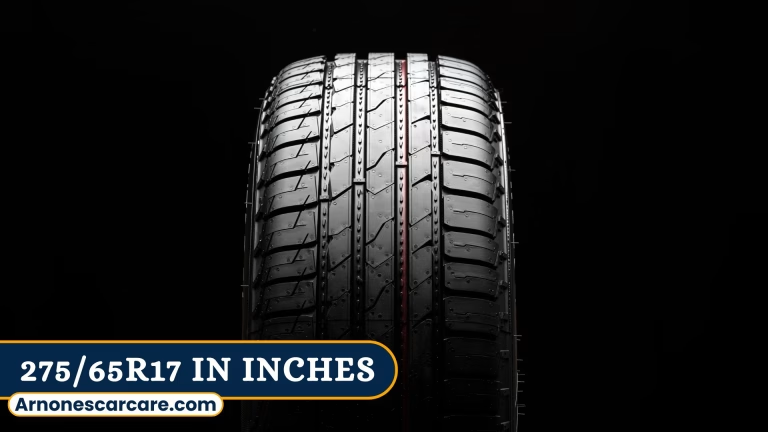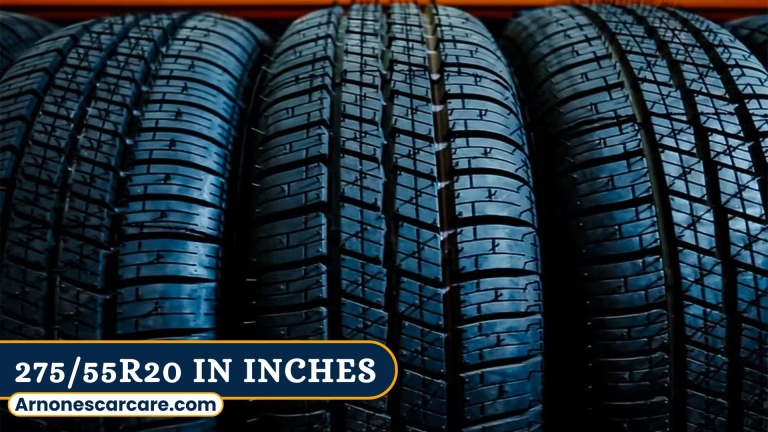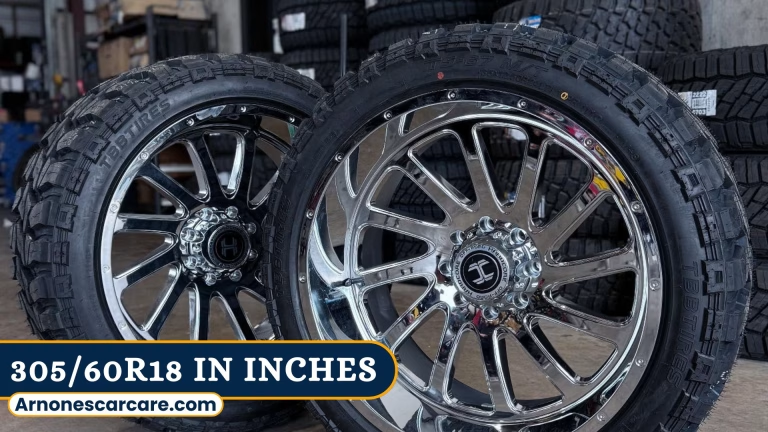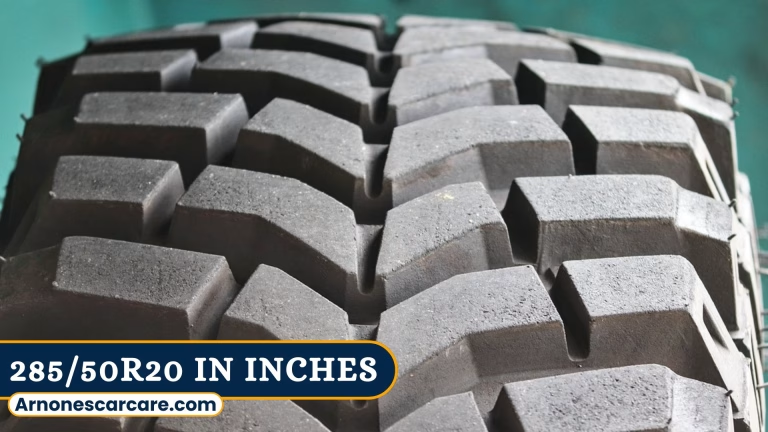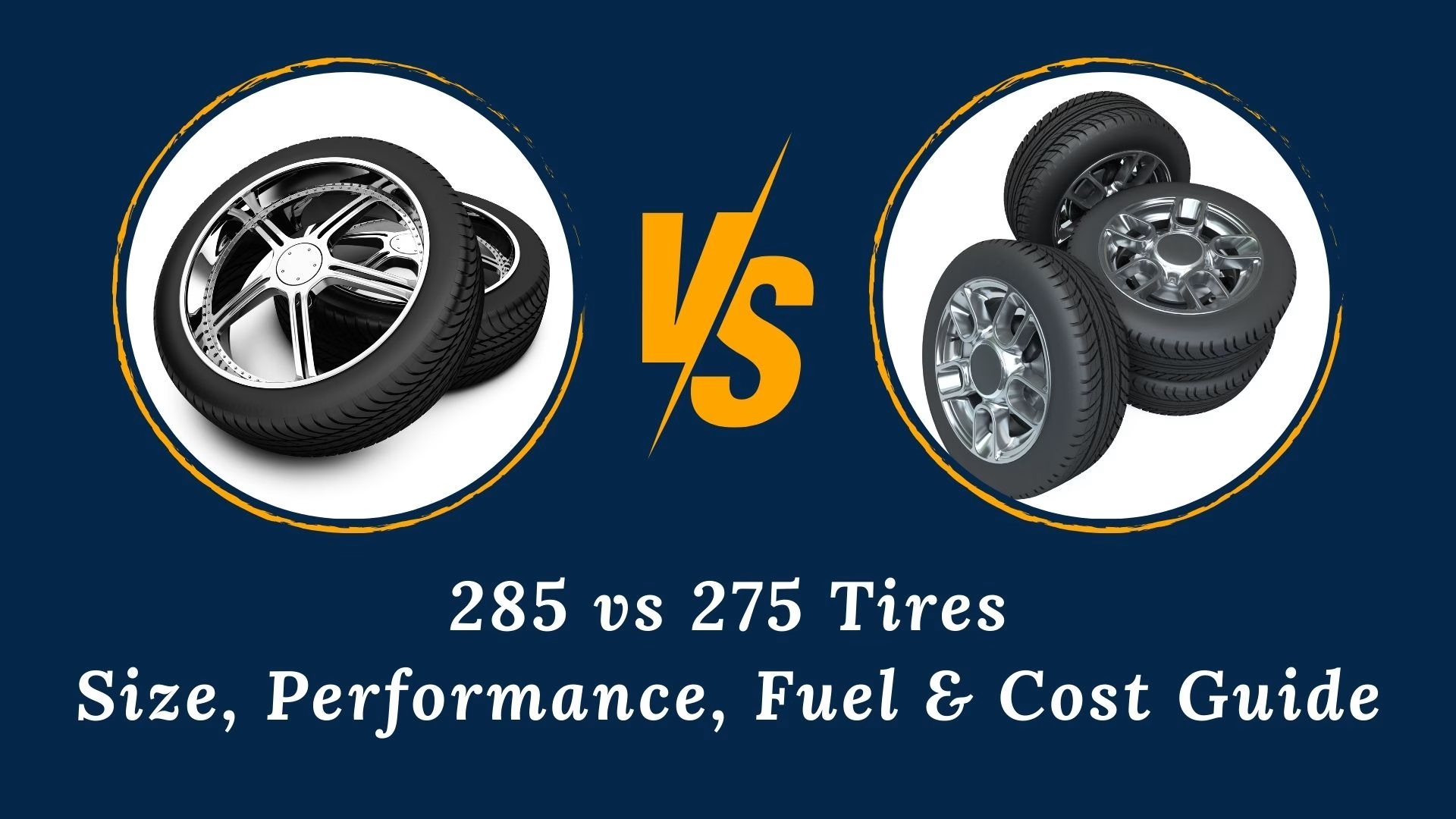
The 285 vs 275 tire sizes are popular choices for trucks, SUVs, and off-road vehicles, offering a balance of performance, durability, and versatility. Both sizes provide solid traction and stability, but their differences in width, handling, and fuel efficiency make them suited for different driving needs.
A 275 tire measures 275mm wide, while a 285 tire is 285mm wide, creating a 10mm difference in contact patch. This may seem small, but it directly affects grip, fuel economy, and steering response. For off-roaders, the extra width of a 285 tire enhances traction on loose surfaces, while the 275 tire’s narrower profile improves maneuverability in tight spots.
If you’re trying to decide between 285 vs 275 Tires, understanding their performance, size compatibility, and cost differences will help you choose the best fit for your driving style. Let’s break it all down. You can explore more about tire sizes on our blog for better understanding and selection.
Tire Size Explained: What Does 275 vs 285 Mean?
Before diving into performance differences, let’s decode the numbers.
- 275 Tire: This means the tire is 275mm wide from sidewall to sidewall.
- 285 Tire: This one is 285mm wide, giving it a 10mm wider contact patch with the road.
But width isn’t the only thing that matters. Here are other key factors in tire sizing:
- Aspect Ratio: This number tells you how tall the sidewall is compared to the tire’s width. A lower aspect ratio often means a sportier look and firmer ride.
- Diameter: Ensures the tire fits properly with your wheels and suspension. A mismatch could affect speedometer readings and handling.
- Fitment: Not every vehicle can accommodate wider tires. You’ll need to check if your wheel wells and suspension allow the extra width.
Now that you understand the basics, let’s compare how these two sizes actually perform.
275 vs 285 Tires: What’s the Real Difference?
When choosing between 275 and 285 tires, the key difference lies in their width, which affects performance, fitment, and handling characteristics. Here’s a breakdown of what you need to know before making your decision.
Width & Contact Patch – Does 10mm Matter?
Yes, a 10mm difference in width can have a noticeable impact. A wider contact patch means more grip, which helps with cornering, traction, and braking. But more surface area touching the road also means higher rolling resistance, which can reduce fuel efficiency.
Will Wider Tires Fit Your Vehicle?
One of the biggest concerns with switching to 285 tires is clearance issues. Wider tires might:
- Rub against suspension components or fenders, especially when turning.
- Require modifications like wheel spacers or a lift kit to fit properly.
Steering & Handling – Which Feels Better?
- 275 Tires: Lighter and easier to steer, making them ideal for city driving and fuel efficiency.
- 285 Tires: Heavier, with more stability at high speeds, but they require more effort to turn at lower speeds.
Load Capacity – Can One Tire Handle More Weight?
The weight capacity of a tire depends on its construction, not just its width. Both 275 and 285 tires come in different load ratings, so it’s best to check your vehicle’s specifications to ensure you’re getting the right strength.
Performance Face-Off: Which Tire Feels Better on the Road?
Now that we’ve covered the basics, let’s talk about what really matters—how these tires perform when you’re driving. Whether you’re looking for better traction, fuel efficiency, or ride comfort, the difference between 275 and 285 tires can impact your experience.
Road Grip & Traction – Which One Holds the Road Better?
- 285 Tires: With a wider contact patch, these tires grip the road better in corners and slippery conditions. If you drive on wet roads, gravel, or trails, 285s offer more stability and control.
- 275 Tires: Though narrower, they still provide good traction for daily driving and perform well in winter conditions, where a smaller footprint can help cut through snow and slush.
Fuel Efficiency – Which One Saves More on Gas?
- 275 Tires: These have lower rolling resistance, meaning less effort is needed to move the vehicle. As a result, they generally offer better fuel economy—great for long highway drives or city commuting.
- 285 Tires: Because they’re wider and heavier, they increase rolling resistance and require more fuel to maintain speed. If MPG is a priority, 275s are the better choice.
Ride Comfort – Which Feels Smoother?
- 285 Tires: The extra width improves stability, but they can also make the ride stiffer, especially on uneven roads.
- 275 Tires: A narrower profile means less road resistance, making the ride smoother and easier on suspension components.
If you want better grip and cornering control, go for 285 tires. But if fuel efficiency and comfort are more important, 275 tires are the smarter pick.
Will These Tires Fit Your Vehicle?
Before making a decision, you need to know if your vehicle can handle the tire size you’re considering. Not all cars, trucks, or SUVs can switch between 275 and 285 tires without adjustments.
What Type of Vehicles Can Use 275 or 285 Tires?
- Trucks & SUVs: Many off-road and performance vehicles can accommodate both sizes, but you may need to adjust wheel wells.
- Passenger Cars: Some sports sedans or performance vehicles may support wider tires like 285s, but 275s are more common for regular driving.
Suspension & Wheel Well Space – Will It Rub?
- 285 tires are wider, meaning they might rub against suspension components or fenders, especially when turning.
- If your vehicle wasn’t designed for wider tires, you may need modifications like wheel spacers or lift kits to prevent clearance issues.
- Always check your owner’s manual or ask a tire expert before making a switch.
If you’re unsure, 275 tires are the safer choice because they fit most vehicles without modifications.
Cost Analysis: Which Tire Saves You More Money?
Tires aren’t just about performance—they’re also an investment. So, which option is more budget-friendly in the long run?
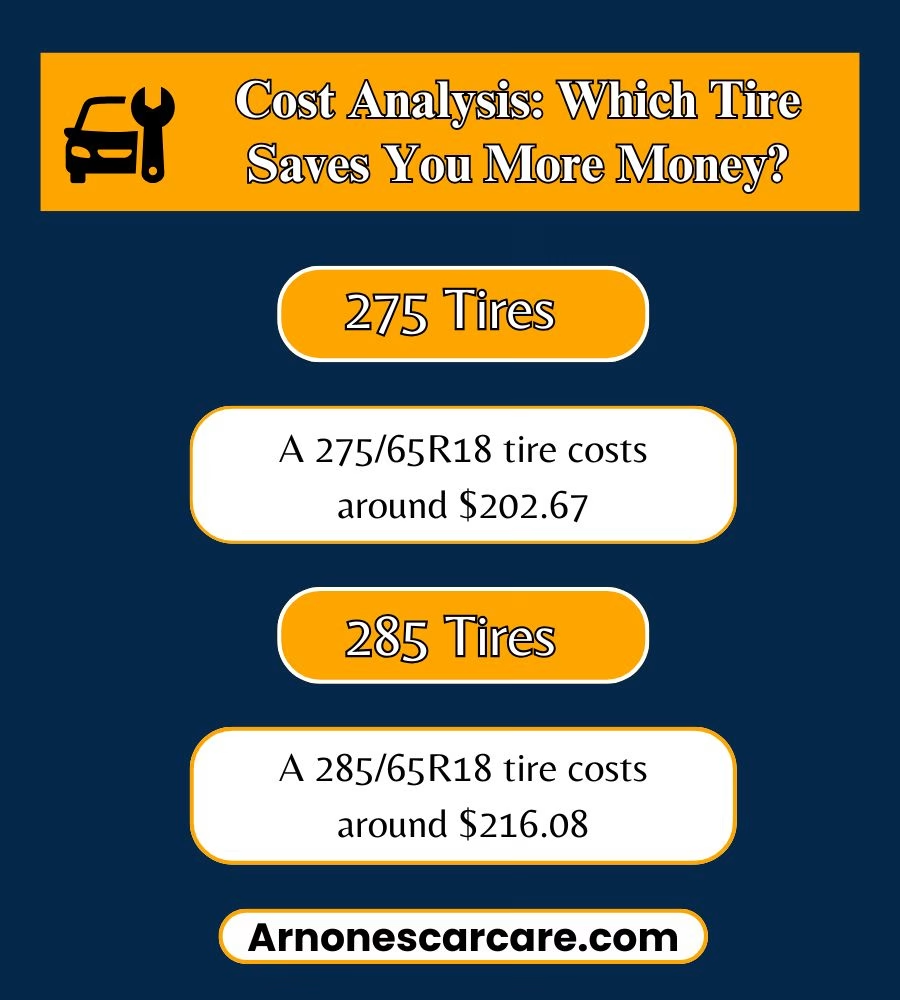
Price Comparison – How Much Do They Cost?
- 275 Tires: These are generally cheaper than 285s. On average, a 275/65R18 tire costs around $202.67.
- 285 Tires: Because of their extra width and materials, they cost slightly more, averaging $216.08 for a 285/65R18 tire.
Long-Term Value – Is Paying More Worth It?
- Durability: Wider tires like 285s may last longer in off-road conditions because they distribute wear more evenly.
- Fuel Savings: 275 tires help reduce fuel costs in the long run, saving money at the pump.
- Maintenance & Replacements: 285s may require more frequent alignments or suspension adjustments, adding to the cost.
If you want to spend less upfront and save on gas, 275 tires are the better deal. But if you need durability and off-road performance, investing in 285 tires might be worth it.
Highway vs. Off-Road: Which Tire Excels Where?
Your tire choice isn’t just about size—it’s about how and where you drive. Whether you’re hitting the highway for long road trips or tackling rough off-road terrain, the difference between 275 and 285 tires becomes clear in real-world conditions.
Off-Road Performance – Which Tire Handles the Wild Better?
- 285 Tires: These are the go-to choice for off-roading because their wider contact patch provides better traction on mud, sand, and rocky trails. If you do a lot of off-road driving or overlanding, 285s can help you power through tough terrain with more confidence.
- 275 Tires: While still capable, their narrower profile gives them an edge in maneuverability. If you’re navigating tight trails or rocky paths, a 275 tire may help you squeeze through without rubbing against obstacles.
Highway Driving – Which One Feels Better on the Road?
- 275 Tires: If you’re doing mostly highway and city driving, these are the better option. They have lower rolling resistance, meaning better fuel efficiency and a quieter ride. Perfect for long road trips where saving gas matters.
- 285 Tires: Wider tires improve stability at high speeds, giving you better control on long highway stretches. However, they can also increase road noise and reduce MPG due to added weight and friction.
💡 Verdict: If you’re a daily commuter or road-tripper, go for 275 tires. If you love off-road adventures and need more traction, 285s are the way to go.
275 vs. 285 Tires: Quick Pros and Cons Breakdown
Still not sure which one to pick? Here’s a simple comparison to help you decide:

✅ 275 Tires Pros:
- Better fuel efficiency – Lower rolling resistance means less gas consumption.
- Smoother ride – Less road noise and a more comfortable driving experience.
- Easier steering – Lighter weight makes handling more responsive.
❌ 275 Tires Cons:
- Less aggressive traction – Not as effective in deep mud, sand, or off-road terrain.
- Less stability at high speeds – Can feel lighter and less planted on highways.
✅ 285 Tires Pros:
- Better grip and traction – A wider contact patch improves cornering, braking, and off-road handling.
- More stability at high speeds – Feels more planted on highways and in harsh conditions.
- Ideal for off-roading – Performs better on loose, rocky, or muddy terrain.
❌ 285 Tires Cons:
- Higher fuel consumption – More surface contact means more resistance and lower MPG.
- Heavier and harder to steer – Wider tires require more effort to turn, especially at low speeds.
- Potential fitment issues – May rub against suspension components or wheel wells without modifications.
How to Pick the Right Tire for Your Driving Needs?
Still torn between 275 and 285 tires? Here’s a quick decision guide to help you choose based on your lifestyle and vehicle use:
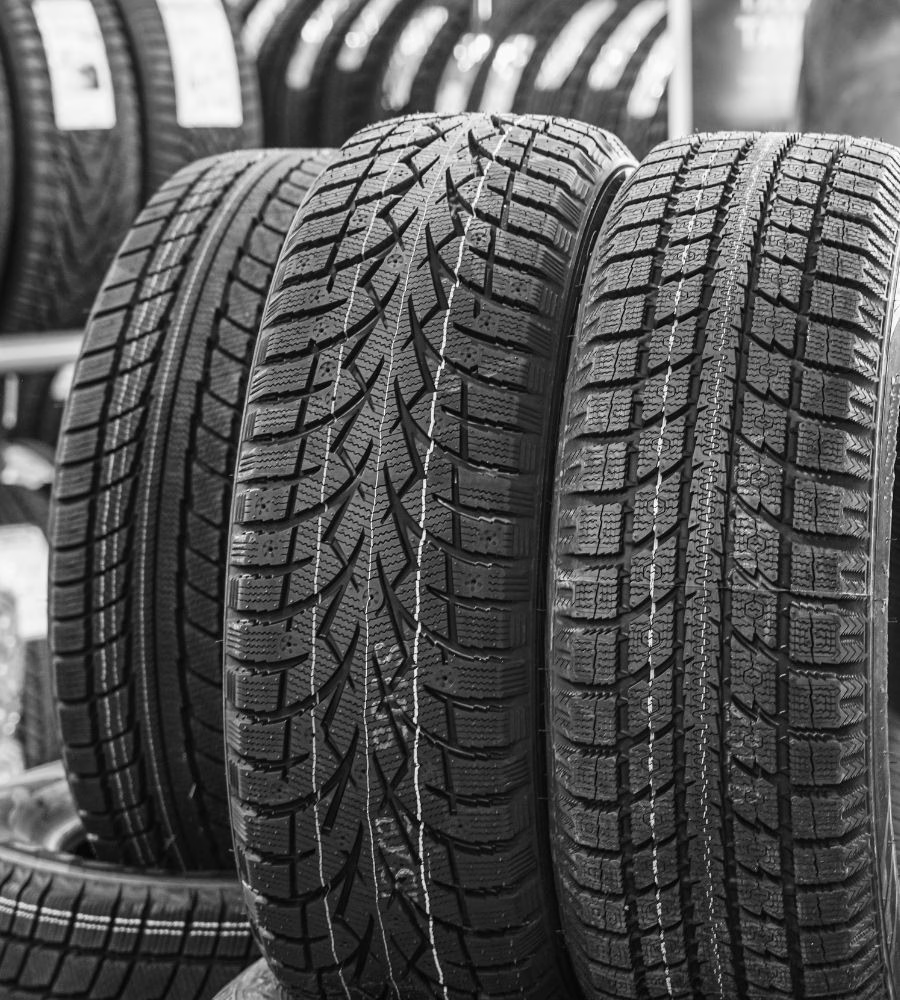
🔹 For Daily Commuting & Long Road Trips → Go with 275 tires
- Better fuel efficiency
- Smoother ride comfort
- Works well for city and highway driving
🔹 For Off-Roading & Rugged Terrain → Choose 285 tires
- More traction on mud, sand, and rocks
- Stable at high speeds on rough roads
- Best for trucks and adventure vehicles
🔹 For a Mix of Both?
- If you do some off-roading but mostly drive on highways, 275 tires might be the smarter balance.
- If you frequently drive on tough terrain, 285 tires are worth the trade-off in fuel economy.
Conclusion
Choosing between 275 and 285 tires comes down to how and where you drive. If you want better fuel efficiency, a smoother ride, and easier handling, 275 tires are the way to go. But if you need extra traction, off-road capability, and better high-speed stability, 285 tires will serve you better.
Consider your driving habits, terrain, and vehicle compatibility before making your choice. Both options have their own advantages, so pick the one that best fits your needs and budget.
You can also get professional tire repair services here to keep your tires in top condition.
FAQs
Q. Do wider tires improve traction?
Yes, 285 tires offer better traction because of their wider contact patch, making them ideal for off-road and wet conditions.
Q. Will 285 tires affect my fuel efficiency?
Yes, 285 tires have more rolling resistance, which lowers MPG compared to 275 tires, which are more fuel-efficient.
Q. Can I replace my 275 tires with 285 tires?
It depends on your vehicle’s clearance and suspension setup. Some vehicles may need modifications like wheel spacers to fit 285s.
Q. Are 275 tires better for highway driving?
Yes, 275 tires offer better fuel efficiency and a quieter ride, making them ideal for long-distance highway driving.
Q. Which tire lasts longer, 275 or 285?
Lifespan depends on driving habits and road conditions, but 275 tires may last longer due to less rolling resistance and wear.

